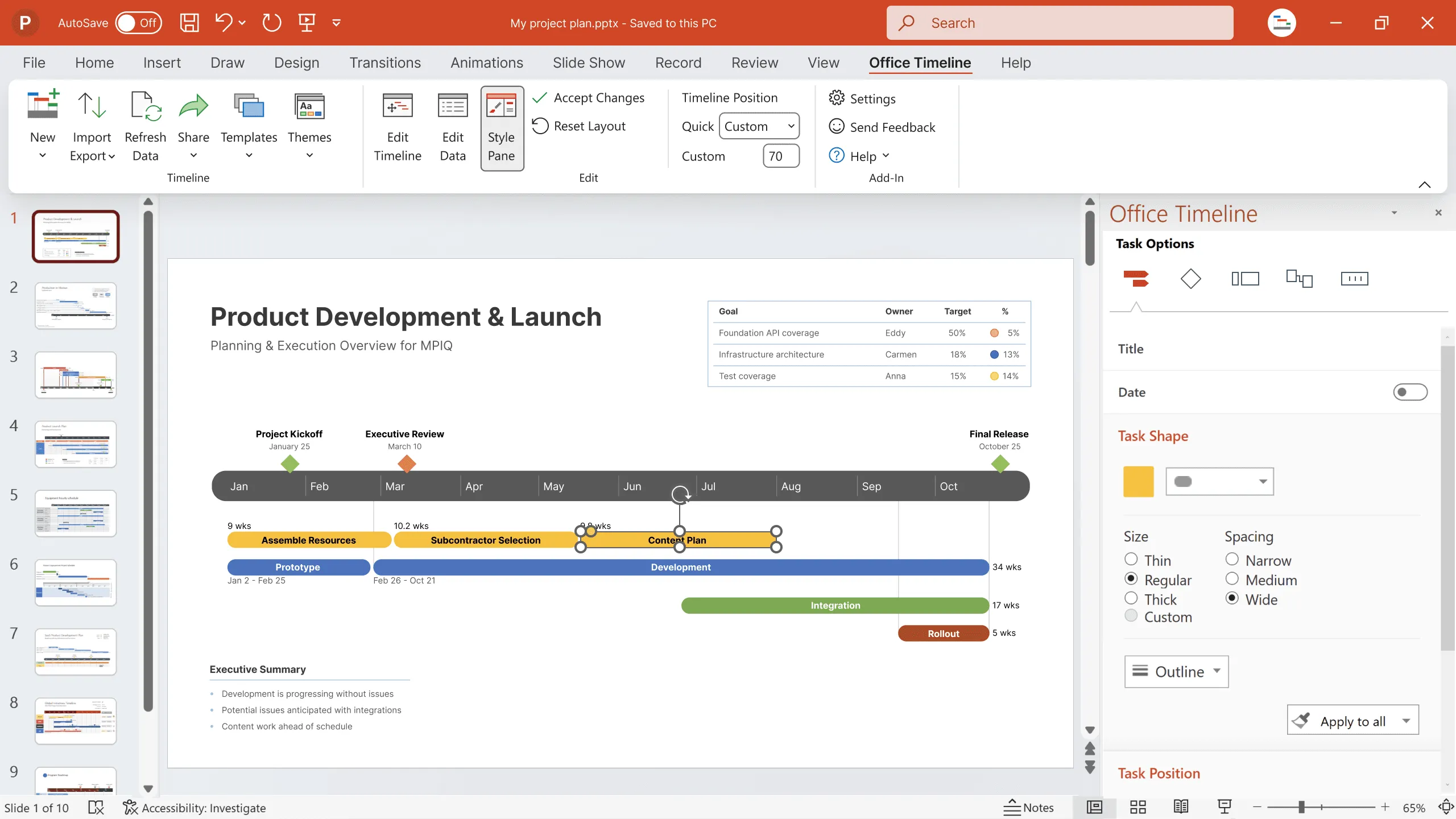Amazon history timeline
Explore a visual timeline of Amazon's history and find out all the key facts about this famous business.
Last Updated on February 12, 2024
Amazon’s history is most certainly wild and chock-full of controversy. Nonetheless, at its core, it’s one of the most famous business success stories about how perseverance against all odds and staying on the critical path is the only way to transform vision into reality.
Jeff Bezos, the founder of Amazon, started the venture as an online book retailer on July 5, 1994, but the business has expanded over the years to sell almost anything one can think of and is now one of the most valuable companies in the world.
To help you get a better understanding of the multi-million-dollar business and see how it evolved over the years, we’ve put together a visual Amazon history timeline, along with a set of frequently asked questions about the company.
The history of Amazon: a timeline
- 1994: Amazon founded
- 1997: Amazon IPOs at $18.00/share
- 1998, May 27: Acquires IMDB
- 1998, Aug 5: Expands beyond books
- 1999: zShops launches
- 2002: Lawsuit against Barnes & Noble
- 2003: A9.com is launched
- 2004: Acquires Joyo
- 2005, Feb: Amazon Prime is launched
- 2005, Nov: Amazon Mechanical Turk
- 2006, Mar: Amazon S3 is launched
- 2006, Aug 25: Amazon Elastic Compute Cloud is launched
- 2007, Aug: Amazon Fresh is launched
- 2007, Sept 25: Amazon Music is launched
- 2006, Nov 19: Amazon Kindle is launched, which will turn out to be an important milestone in Amazon’s history timeline
- 2008: Acquires Audible
- 2009: Acquires Zappos
- 2010: Kindle e-books outsell hardcover books on Amazon by almost 50%
- 2011, Feb: Amazon Instant Video is launched
- 2011, May 2: Amazon Appstore is launched
- 2012: Acquires Kiva Systems
- 2013, March: Acquires GoodReads
- 2013, Jun: Amazon launches in India
- 2014, Jul 25: Kindle Fire is launched
- 2014, Aug 25: Acquires Twitch
- 2015, Aug 26: Amazon Underground is launched
- 2015, Nov 2: 1st physical store in the history of Amazon
- 2016: Amazon Prime Air is launched
- 2017, Jun: Acquires Whole Foods
- 2017, Sept 7: Amazon announces search for second headquarters
- 2018, Jun 1: Acquires PillPack
- 2018, Sept 4: $1 trillion market cap reached
- 2018, Oct 2: Minimum wage raised to $15/h
- 2018, Nov: NY and Virginia to become Amazon HQ2
- 2019, Feb 1: NY HQ plans scrapped
- 2019, Jul 5: 25-year anniversary
- 2019, Sep 24: Amazon Care is launched
- 2021, Jul 5: Jeff Bezos steps down as CEO
- 2022, Mar 17: Amazon acquires MGM
- 2023, Nov 27 – Amazon surpasses FedEx and UPS to become no.1 delivery company in the US
- 2024, Jan 29 – Amazon Prime launches new tier supported by ads
Frequently asked questions about Amazon
The Amazon timeline can give you a straightforward overview of the company’s evolution, product launches, and innovations. If you want to dig deeper, below you can find answers to the most common questions about the business giant.
Amazon started out on July 5, 1994, as an online bookstore. Jeff Bezos, together with his then-wife and a few employees, began operating the company from his garage in his rented home in Bellevue, WA. Bezos funded Amazon with $10,000 of his own money to get things moving, and soon the company was popular enough to go public in 1997.
Amazon was originally launched as a website that sold exclusively books, competing with local book sellers and with Barns & Noble. Based on research he had conducted, Bezos decided that an online bookstore was the most logical option as an initial undertaking because books were easy to source, package and deliver, allowing the business to be competitive and to offer convenience and affordability.
However, although Bezos settled on a web bookstore initially, his vision was much bigger right from the beginning. He did not see Amazon just as an online retailer, but as a tech company whose real selling point was to streamline web transactions for its customer base.
The founder of Amazon is entrepreneur and investor Jeff Bezos, one of the top richest people in the world. Born in 1964 in Albuquerque, New Mexico, he graduated from Princeton University, where he studied computer science and electrical engineering. After graduation, Bezos worked on Wall Street in various related fields, and, in 1990, he became the youngest senior VP at the hedge fund firm D.E. Shaw. In 1994, he left the firm to open his own business, Amazon.com.
The notorious businessman is not only Amazon’s founder, but also the owner of The Washington Post, Blue Origin, and Bezos Expeditions. If you’re curious, check out our Jeff Bezos timeline for more insights into the life of the man behind it all.
Despite being met with skepticism when it opened, Amazon managed to prove naysayers wrong and grew surprisingly fast, reaching 180,000 active user accounts after its first full year of operation, in 1996. And, just a year later, in 1997, the number of accounts grew to a whopping 1,000,000. As for its revenues, the company rose rapidly from $15.7 mil in ’96 to 148 mil in ’97, and then to 610 mil the next year. 1999 marks another important milestone on Amazon’s timeline, when founder Jeff Bezos is designated Person of the Year by the Time magazine, thanks to his business’ rapid growth and success.
The name “Amazon” wasn’t Bezos’ first choice. “Cadabra” (as in Abra Cadabra) was his first option for the business name, under which he even incorporated the company back when starting out. However, very soon after, Bezos changed his mind, supposedly because his trademark lawyer misheard the word as “cadaver” – not quite the image you’d like your bookstore business to be associated with. Eventually, Bezos took a shine to “Amazon” as the brand name, not only because of the exotic allure, but also because it’s the largest and longest river in the world, and that would fit really well with his grand vision for the store.
• Amazon’s main headquarters are located in Seattle, Washington, in a three-tower complex in the Denny Triangle neighborhood. The full address is 410 Terry Ave. N Seattle, WA 98109.
• Amazon HQ2, the company’s corporate headquarters, is located in Crystal City, Arlington, Virginia, and opened in June 2023.
Although it’s not the biggest company worldwide by revenue, Amazon is currently the largest online retailer on the planet, but also a major player in physical retail stores, subscription services, and web services. In terms of revenue, in 2023, Amazon generated a staggering $574 billion, making it the third-largest company in the world.
How much a company is worth is usually represented by its market cap, which is the total market value of the company’s outstanding shares. As of February 2024, Amazon’s market capitalization is 1.81 trillion USD, which places Amazon among the most influential companies in the world. In terms of sales, Amazon achieved over half a trillion USD in 2022 globally, with a profit of 30.4 billion USD in 2023 after a brief net loss in the previous year.
Amazon’s history timeline spans decades, often marked by controversy. Despite that, the e-commerce store continues to be one of the most successful businesses in the world. Here are the top reasons why:
• Customer-focused. Amazon is relentlessly committed to offering high-quality customer service. It has developed helpful tools to make the purchasing process as convenient and possible, and their support team has won multiple awards throughout the years.
• Diversification. The e-store now sells everything one could think of, from skates to soup.
• Reliable delivery speeds
• Reasonable prices
• Regular discounts
• Global reach
• Innovation. The company’s success also stems from its focus on innovation, integrating state of the art technologies and practices into their business model. Take, for instance, Amazon, Echo and Alexa, which have proven to be extremely popular.
• Safe environment
• Kindle Direct Publishing. Another factor that played an important role in Amazon’s success is that it allows authors to publish e-books and hardcover books free of charge, unlike most publishing services.
There’s a common misconception that Jeff Bezos was the owner of Amazon up until recently, when he stepped down as CEO in 2021, and people are wondering who owns the company now. The thing is, Bezos wasn’t the owner even before he gave up his CEO role. As you can see on the Amazon history timeline, Amazon IPO-ed in 1997, so it’s been publicly owned since then. With 12.3% of outstanding shares in the company, Bezos is still the largest shareholder, followed by Andrew Jassy and Douglas Herrington as top individual shareholders, and by Vanguard Group, Blackrock and State Street as institutional shareholders.
Amazon’s biggest retail competitors today are:
• Target
• Walmart
• Costco
• Ebay
• Alibaba
• JD
These are all companies that offer products online (although some note exclusively) and have a vast global presence. But the e-commerce retail world is not the only area where the giant faces fierce competition. In the technology sector, Amazon competes with Google and Apple, while in the streaming industry, it faces Netflix, Apple TV, Hulu, Disney and even Spotify as competitors.
About the Amazon History Timeline
The Amazon history timeline was created with the Office Timeline add-in for PowerPoint, a robust and easy to use timeline maker that effortlessly creates and updates visual plans and chronologies. The Amazon timeline can be downloaded for free as an editable, fully functional PowerPoint slide. To modify it, you can either use PowerPoint’s controls, or install the trial version of Office Timeline, which will automate and speed up the process.
Eddy is Founder & Chief Product Officer for Office Timeline, building a user-friendly but powerful app that makes timelines, Gantt charts and roadmaps directly in PowerPoint.
Turn project data into professional timelines
Get the advanced features of Office Timeline free for 14 days.



